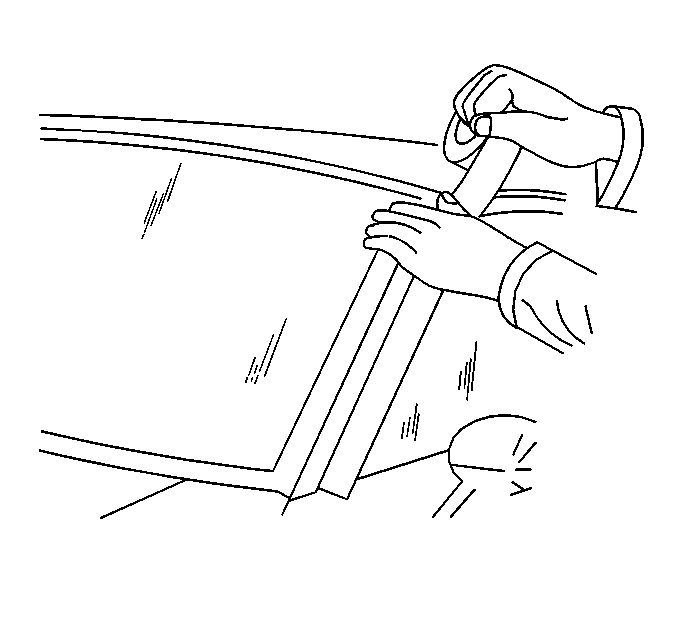Caution: An assistant should drive the vehicle while the technician checks for the location of the reported condition. Otherwise, personal injury could result.
In order to analyze a reported windnoise condition, test drive the vehicle. Many variables may singularly or collectively create the noise condition.
Important: Often a vehicle will have 1 primary leak source and 1 or more secondary leaks that contribute to the noise condition. If you repair only 1 of the contributing leak sources, you may not completely repair the total condition, but only reduce it.
Take the following items during the test drive in order to aid in pinpointing and marking the area(s) of the leak:
- A mechanic's stethoscope or vacuum hose
- Masking tape--51 mm (2 in) wide
- Strip caulk
- Screwdriver
Choose a regular route for the road test.
Ensure that the road test meets the following requirements:
| • |
| • |
| • |
Drive the vehicle at the speed at which the customer noticed the noise. Drive the vehicle until you hear the noise. Never exceed safe, legal speeds.
Determine if the noise is an objectionable windnoise, as opposed to normal or standard sounds.
If you can hear the noise with the door window lowered and while the vehicle is being driven, the noise is an external windnoise.
You may pinpoint the exact cause of an external windnoise condition by taping various moldings and gaps until you eliminate the noise.
If you can not hear the noise with the windows lowered, then one of the following conditions exists:
| • |
| • |
Air leaving the body indicates internal windnoise.
Complete the following steps in order to locate the source of the internal windnoise:
- Tape off the body lock pillar pressure relief valves. Air pressure will build up inside of the vehicle and enhance the windnoise.
- Trace the suspected seal using the stethoscope or section of vacuum hose in order to locate the leak area.
- Temporarily repair the condition using masking tape. Adjust the tape as required. Continue testing in order to determine if the noise has been eliminated, or if other leaks exist.
- When you have located all reported leak conditions, return to the shop. Make permanent repairs using proper alignment techniques and sealing materials as required.

